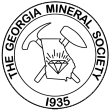GMS Field Trip January 2025
If you have any questions about field trips send email toGMS Field Trip
Jasper, Chert, Late Cambrian Fossils in Alabama
Saturday, January 25, 2025
This trip had to be cancelled because of extreme cold. Fortunately, the property owners had a weekend available, so we happily accepted their invitation for a later date, and rescheduled the trip. Everyone who originally registered for the trip was still eager to go, so we had a full list plus several on the waiting list. Thanks to the members who let us know when their situations changed and they could no longer attend, we were able to get everyone off the waiting list!
We didn’t have to face the extreme cold that scuttled the first attempt, but it was still mighty cold that morning. Charles gathered everyone to talk about the three locations we would be visiting and to go over the rules of the first location. Then, Cam Muskelly volunteered to give us a quick description of the geology of the area. He explained that the first location is in a formation that is Upper Cambrian/Lower Ordovician and was part of a reef system 485 million years ago. The other two locations are in a formation that is Middle Cambrian, a geological epoch that occurred between 513 – 501 million years ago.
Charles led a conga line of cars to the first site, where members performed a beautifully choreographed car ballet culminating in a tidy, perfectly spaced line. Lynn LeMaster and Tim Hellinger discovered this new location for GMS and worked with the property owners to set up the trip. The property owners generously offered us seven acres of pastures to search! To thank them for their generosity, members gathered more than the rocks they wanted to take home, then discarded the unwanted rocks in designated piles. Members also filled any holes left by the removal of rocks plus any other holes they found. These efforts were to keep the horses safe from rock and hole hazards, and to provide the owners with convenient piles of rocks to use for erosion control.
Members found several specimens of banded chert/agate that is reminiscent of material found in northwest Georgia. Banded jaspers and green jaspers were also among the finds for the day. And, in addition to having fun racing around the pasture, sharp-eyed juniors kept finding specimens with very tiny quartz crystals and sparkling druzy crusts. Since we were collecting in what was an ancient reef system, there were also some fossils, including gastropods and stromatolites! Stromatolites are trace fossils that consist of lithified mats of sediment that were formed by certain types of cyanobacteria that lived in marine environments. One large piece is destined for the GMS collection as the first sample of stromatolite from that area, and possibly the first stromatolite documented from that area.
Once everyone was satisfied with their finds, we made a quick once over to ensure we had not left any holes or big rocks in the pasture, then headed to the second location. There, members perused delicate shale, reading the layers as a book of the past, searching carefully for trilobites on each page. Scattered about in the shale were concretions that contain pieces of trilobites too. This was also the first time we’ve seen a trilobite in a stylolite here. The stylolites in this area are structures formed from limestone dissolved under pressure. They appear as striated rocks that are often confused with petrified wood. Many trilobites that haven’t seen the light of day for millions of years found new homes that day. One member found a superb specimen of cruziana traces, i.e., burrows made by trilobites, then preserved in sediment that hardened later. Another unusual find was a piece of purple/gray iron slag, most likely from an iron furnace used during the civil war. Oh, juniors found some frozen fish too, and we marveled together at the strange sound some surface ice made as the wind blew across it.
We could have spent the rest of the day absorbed in the bookstacks of the trilobite library, but the group decided to continue on to another site to search for brooksellas – curious, multi-lobed, puffy-flower-shaped specimens once thought to be fossils. Now, they are no longer considered to be fossils, thanks to extensive research performed by GMS member Dr. Morrison Nolan and his colleagues. So, if they aren’t fossils, what are brooksellas? That is still a mystery, and who doesn’t love a good mystery?
At first, members struggled to find the elusive not-fossils, but eventually, they tuned their eyes and acquired some brookella hunting skills. Most of the brooksellas were not as well-defined as we have seen in the past, but one specimen had some peculiar features on each lobe. The member who found it donated it to GMS, so that brooksella is for Morrison to study. Amongst all the things that were not brooksellas, one member found a beautiful trilobite peeking out of a concretion! Also, we are not sure, but members may have found some fossilized sponges. If not, they are still cool little concretions.
Speaking of concretions, juniors were keen to learn about them, but I did not do a very good job explaining how they form, so if you guys are reading this, here you go. Concretions are formed when minerals precipitate from water and fill spaces in sediment, cementing the sediment together, often around a nucleus that may have been organic, like a leaf or bit of shell. They form before surrounding sediment is lithified, i.e., turned to rock, so concretions are harder, and weather out of the softer sedimentary rock later.
We had so much fun playing in the gravel together! If not for a sleepy sun telling us it was time to go home, we could have spent even more time there, but alas, the trip had to end.
There are many people to thank for this trip, but first and foremost, we must thank all of the property owners who so graciously allowed us to collect on their properties. Without them there might not be the scientific discoveries that can come from these trips, not to mention all the fun we have and the great specimens we bring home. Many thanks to Lynn LeMaster and Tim Hellinger for finding locations for the club, and working diligently with the owners to make this trip possible. Thank you to all of the members who shared the excitement of their finds with me, so I could photograph them to share with you, and sent even more pictures after the trip. And, of course, thank you to Charles Carter, Tim, and Lynn, for organizing yet another fantastic GMS field trip!
Lori Carter on behalf of Charles Carter
e-mail:
Banded Chert/Agate, Jasper, Fossils
Photos by Lori Carter
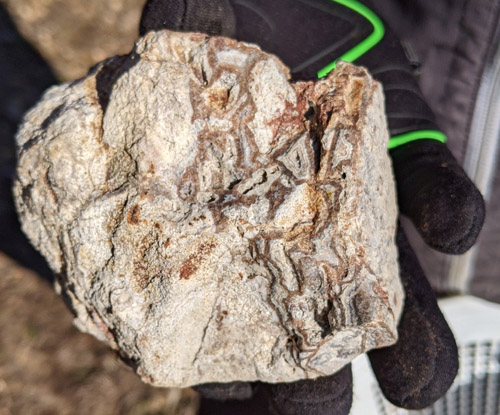
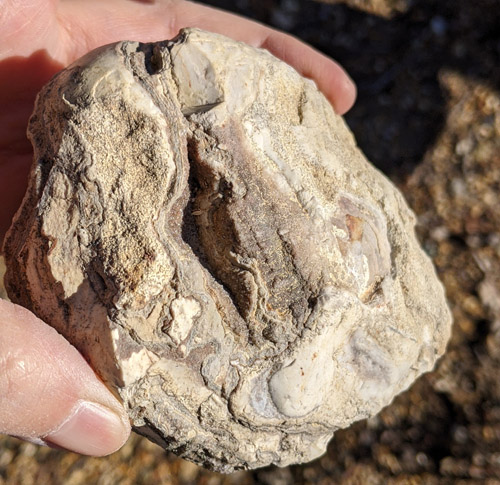
Some of the rocks were reminiscent of rocks from Northwest Georgia
Photos by Lori Carter
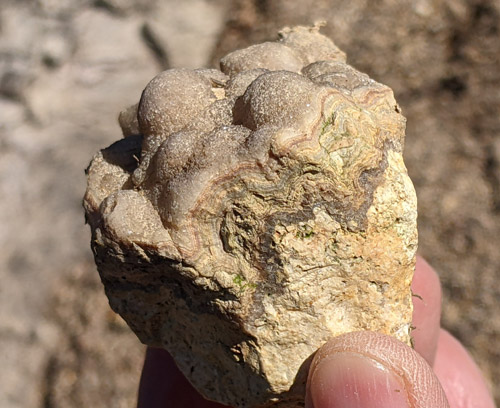
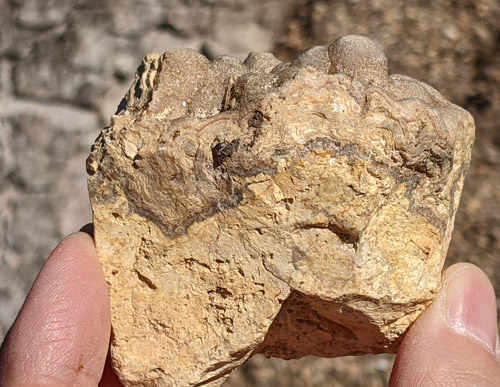
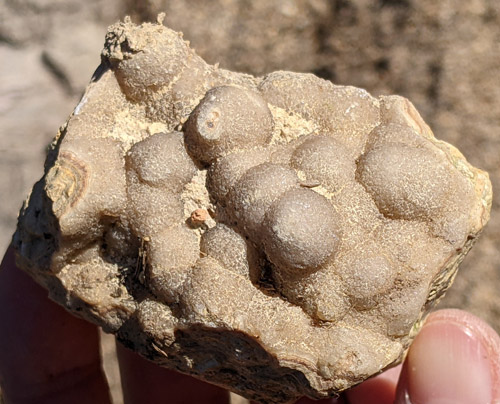
This specimen could easily be confused with rocks from Georgia
Photos by Lori Carter
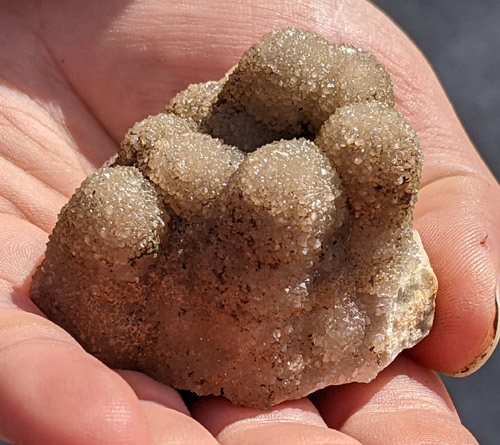
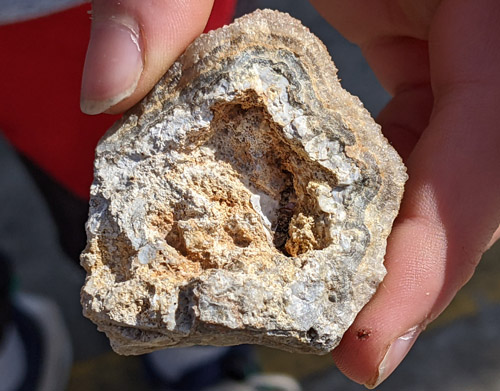
You would swear...
Photo by Lori Carter
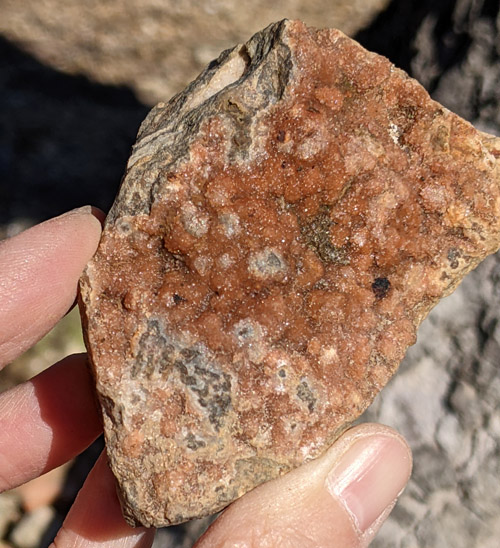
Juniors became skilled at finding druzy crusts like this one
Photo by Lori Carter
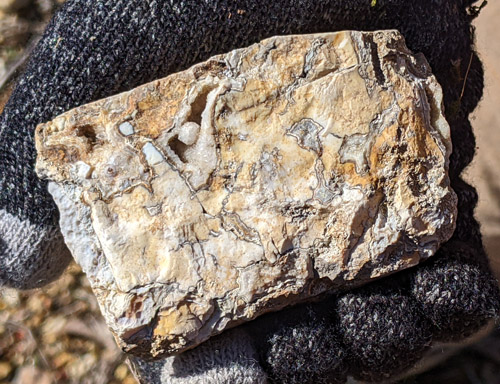
This one has some banding and a pocket of tiny crystals
Photos by Lori Carter
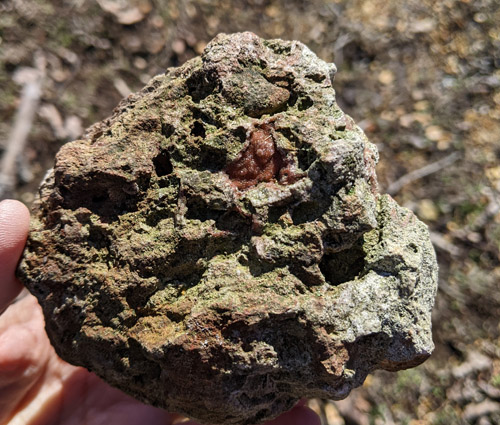
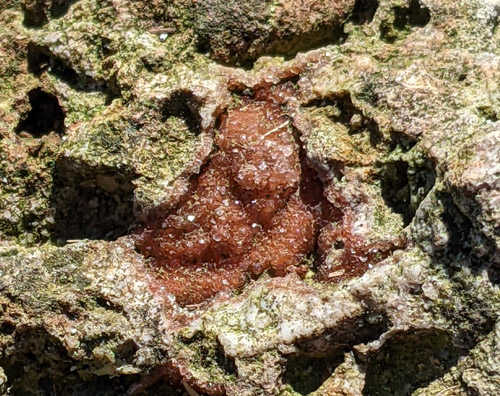
Here's another junior find with a beautiful pocket...
Photos by Lori Carter
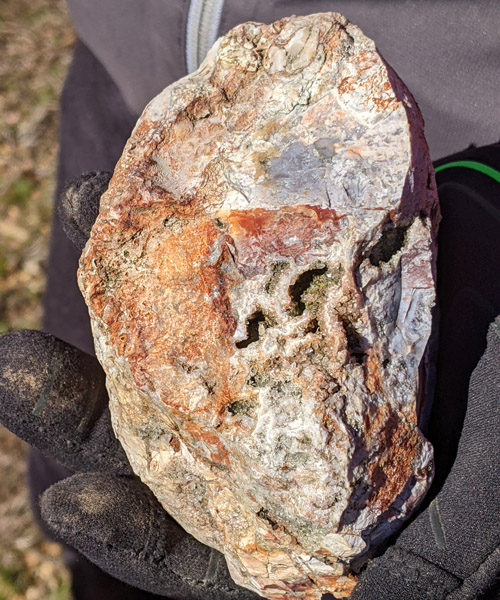
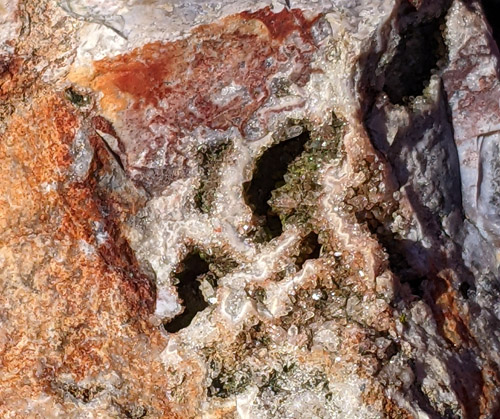
...and another...
Photos by Lori Carter
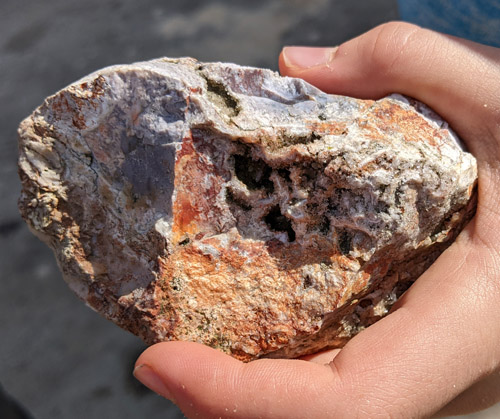
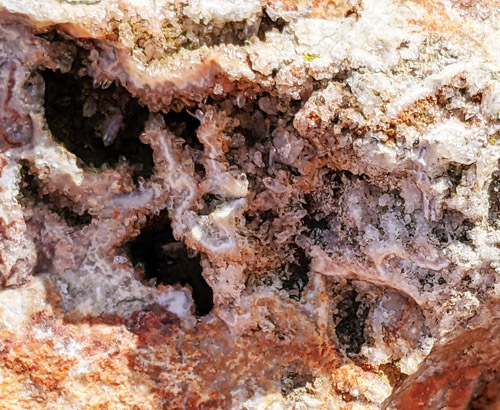
...and another!
Photos by Lori Carter
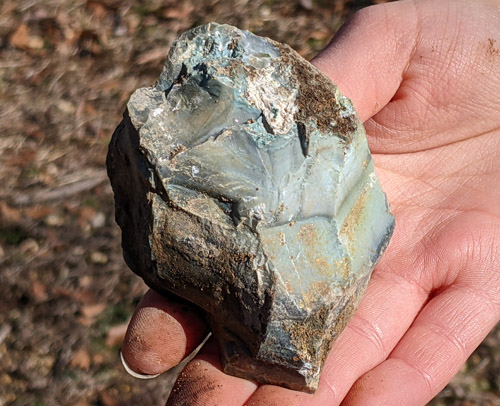
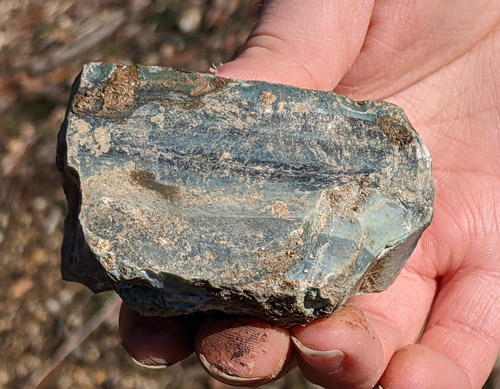
A junior found this beautiful green jasper
Photo by Lori Carter
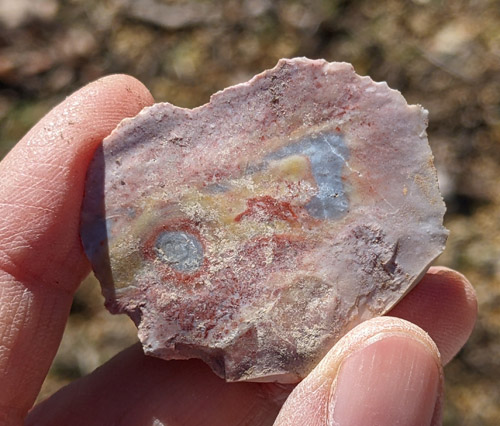
Another colorful junior piece
Photo by Lori Carter
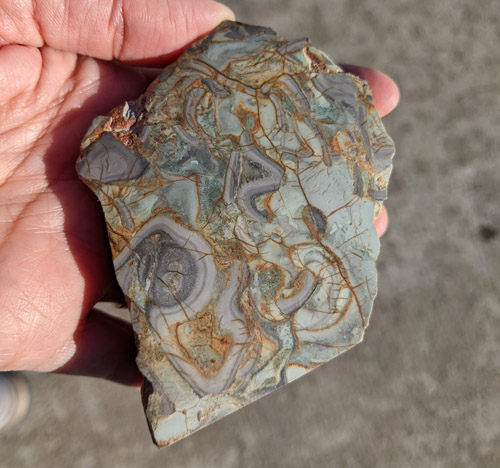
Tim polished this piece the property owner's granddaughter found
Photo by Lori Carter
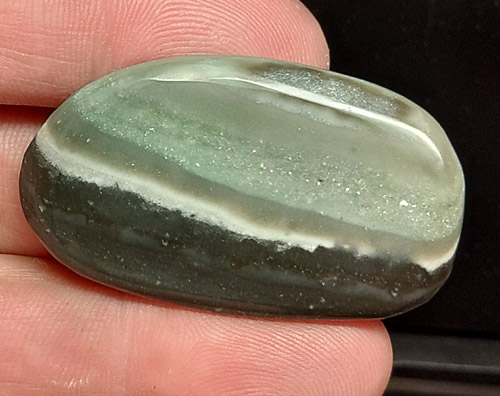
Tim polished made this cab for the property owner
Photo by Tim Hellinger
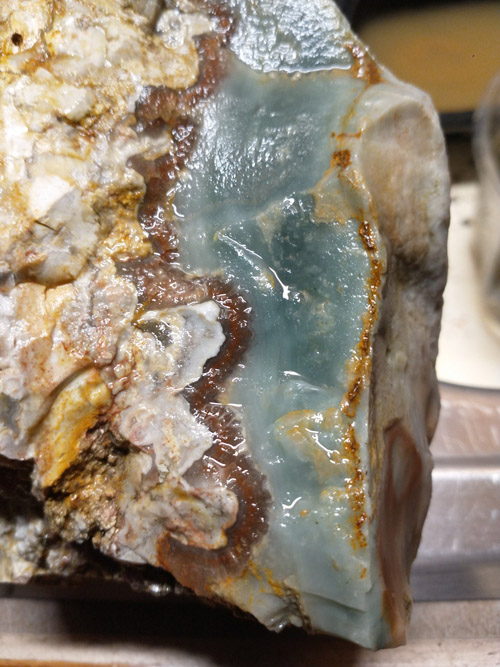
Here's a piece with some translucency that Tim found
Photo by Hannah Tripp
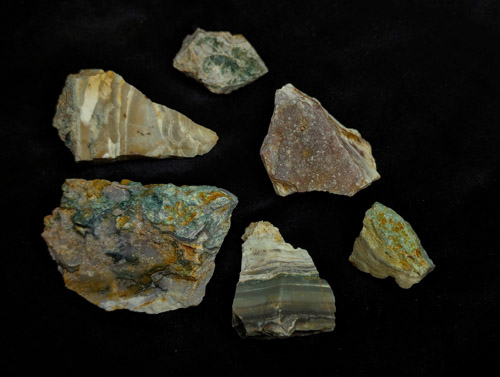
Here are some of Hannah's favorite jaspers
Photos by Amy Judd
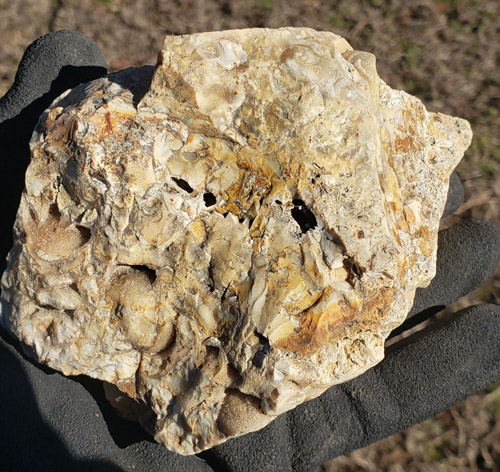
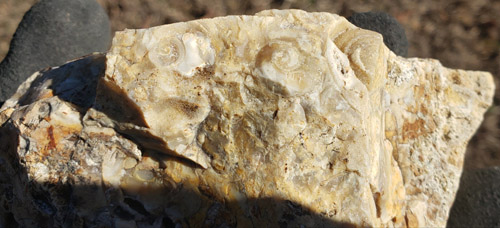
Amy found this piece with multiple gastropods -- note the 3 prominent specimens at the top
Photo by Lori Carter
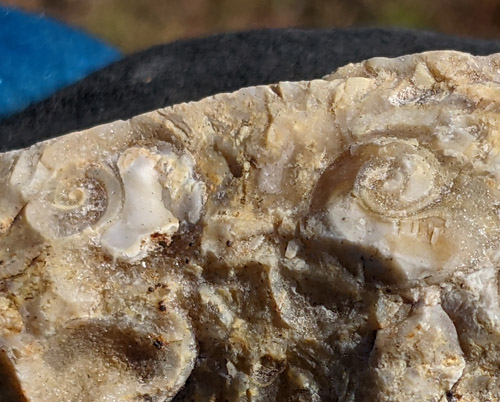
Close-up of two of Amy's gastropods
Photo by Lori Carter
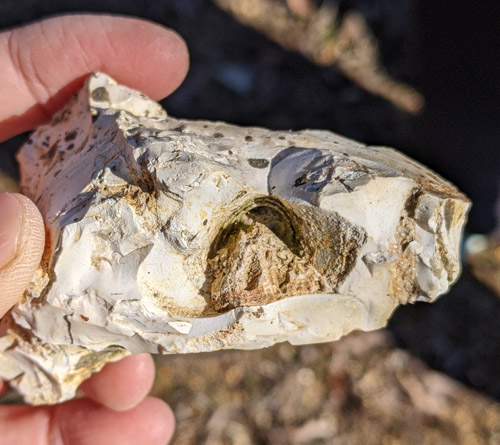
Cam's keen eye caught this brachiopod cast
Photos by Lori Carter
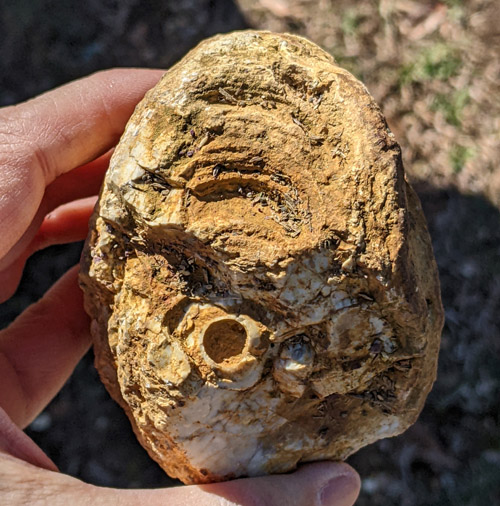
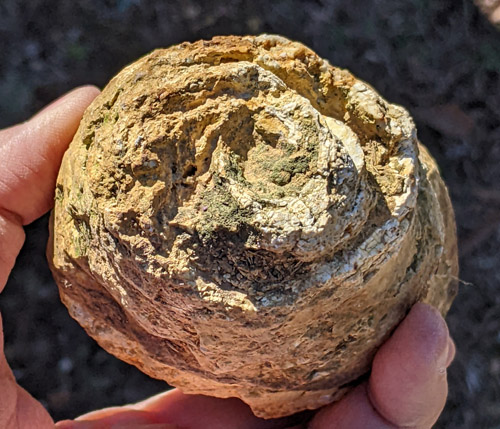
This nice specimen of stromatolite made us keep our eyes open for more
Photos by Lori Carter
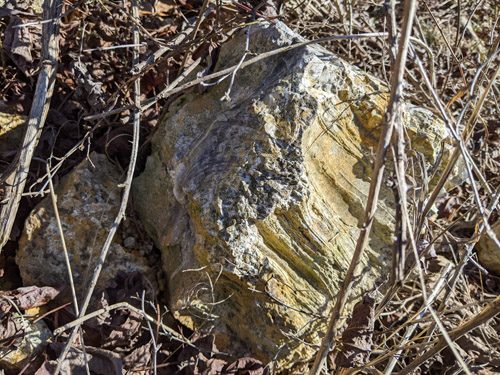
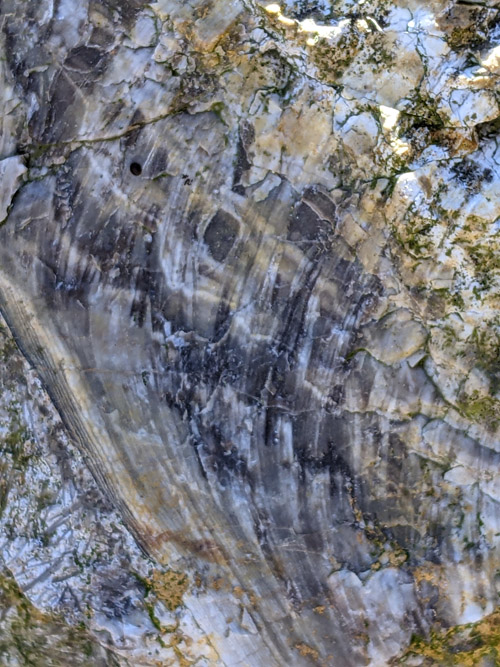
As we were getting ready to leave we spotted this stromatolite
Photos by Hannah Tripp
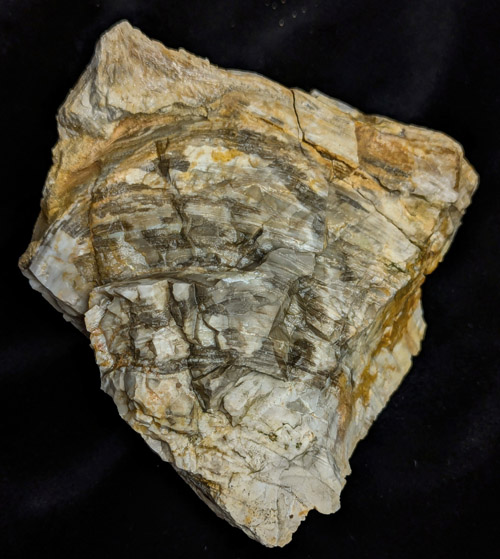
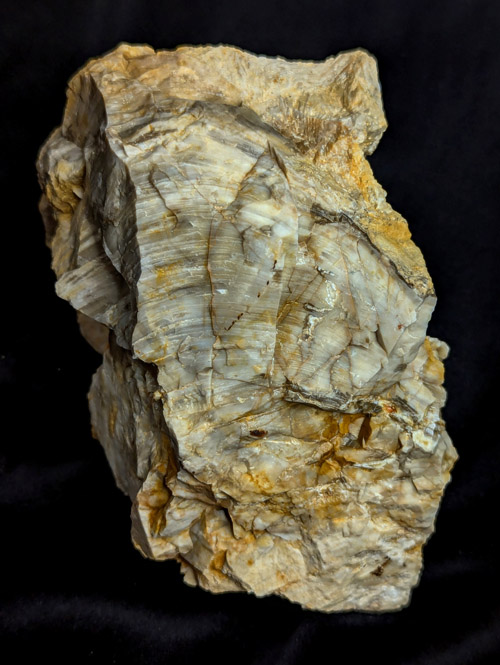
Hannah found these gorgeous stromatolites
Photo by Hannah Tripp
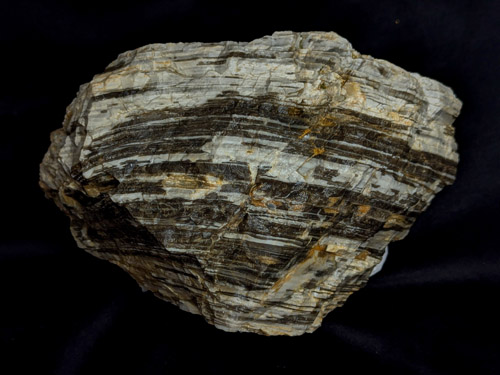
This piece Hannah found near stromatolites may or may not be stromatolite
Photo by Tony Pack
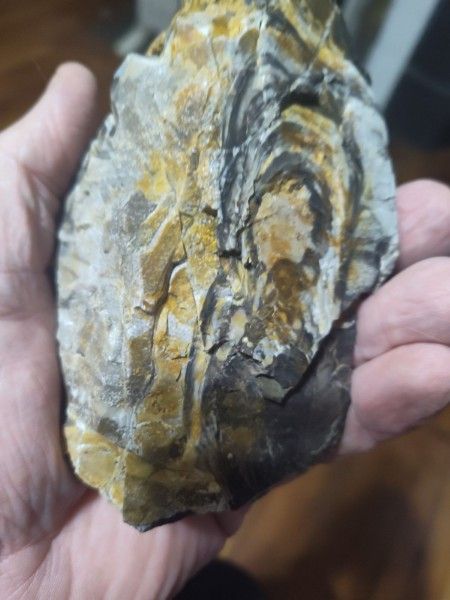
Tony got a nice stromatolite too, something he had on his rock bucket list!
Photo by Tony Pack
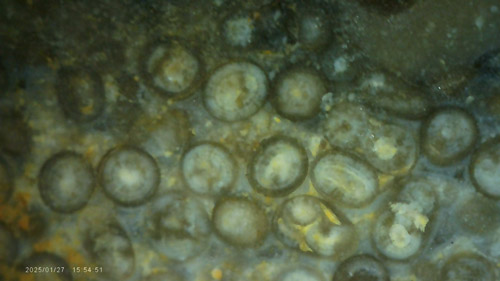
Tony looked closer at his stromatolite and found ooliths!
Photo by Lori Carter
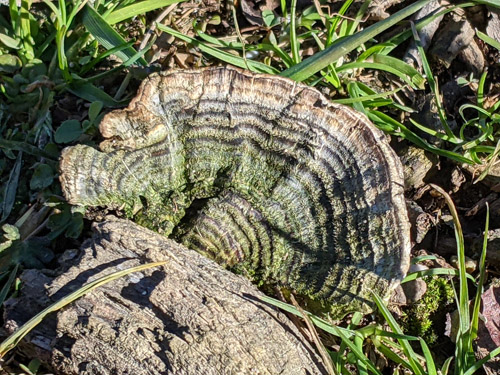
I had stromatolite on the brain, so this fungus growing on some wood immediately caught my eye
Trilobites!
Photo by Lori Carter
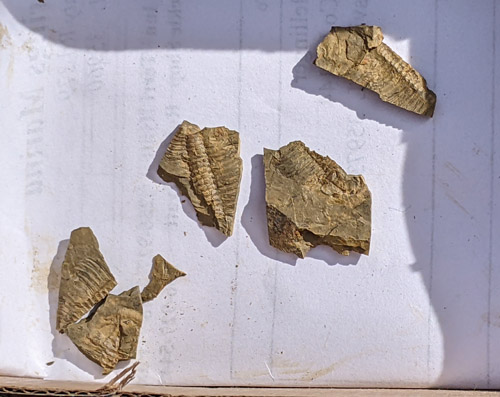
First trilobites of the day!
Photo by Lori Carter
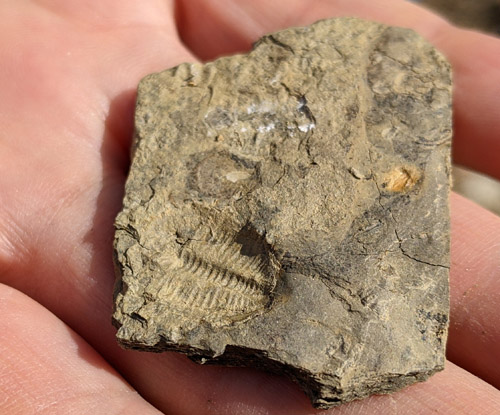
Juniors found trilobites right away
Photos by Lori Carter
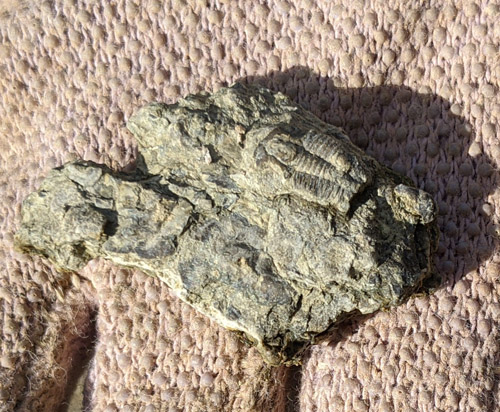
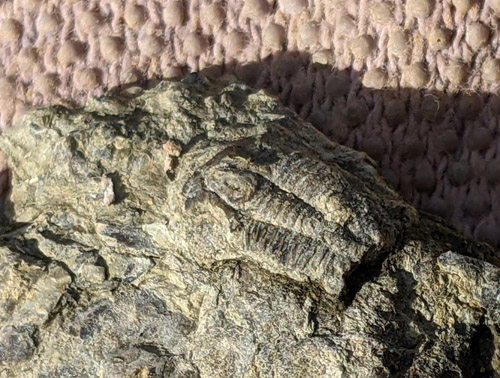
A tiny trilobite in shale
Photos by Amy Judd
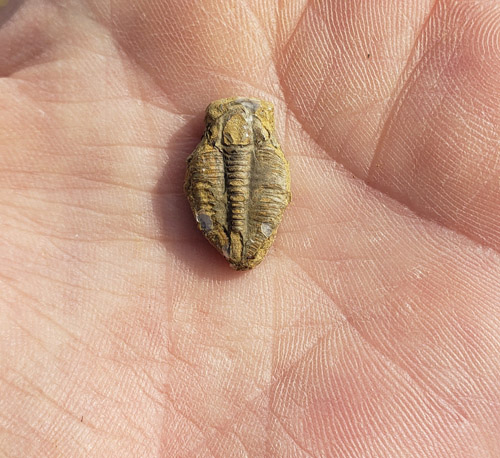
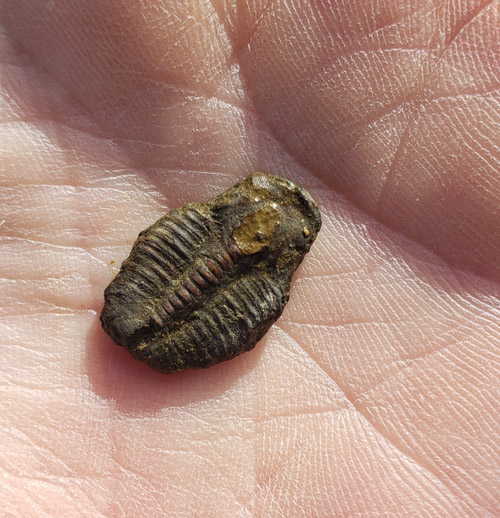
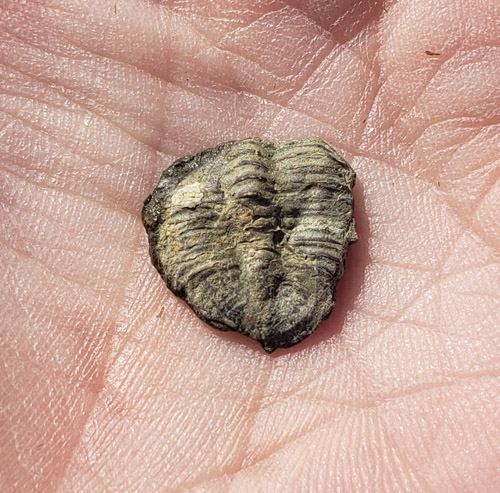
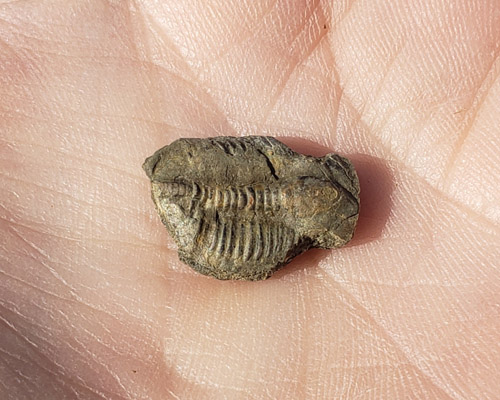
Amy found lots of loose, tiny trilobites
Photos by Lori Carter
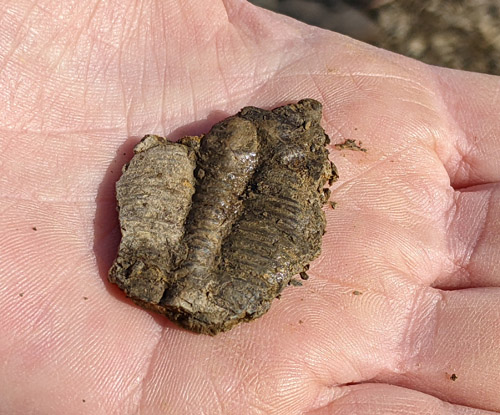
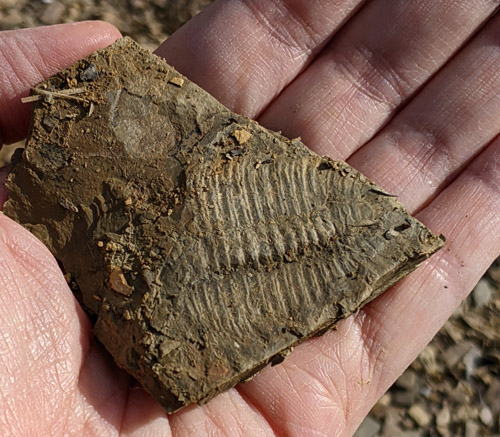
A junior found these large trilobites!
Photos by Lori Carter
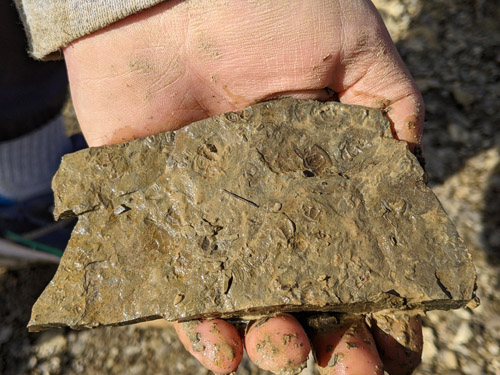
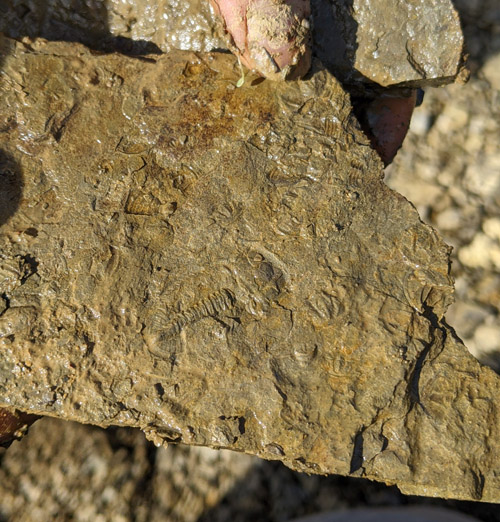
Another junior found this plate with multiple trilobites
Photos by Lori Carter
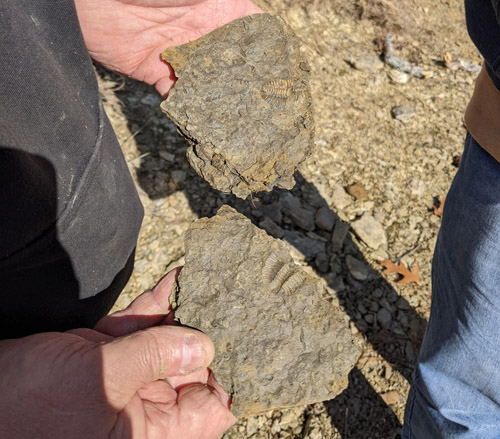
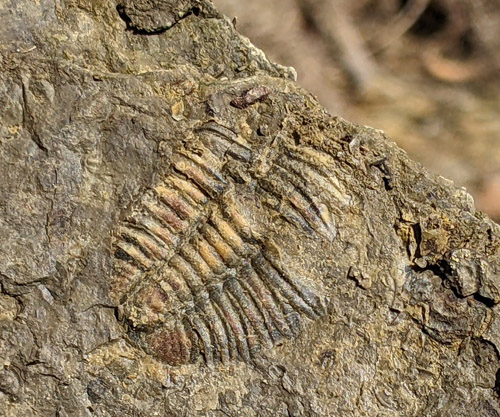
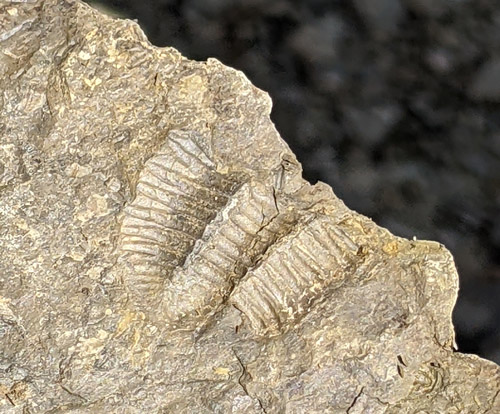
Positive and negative of a trilobite
Photos by Lori Carter
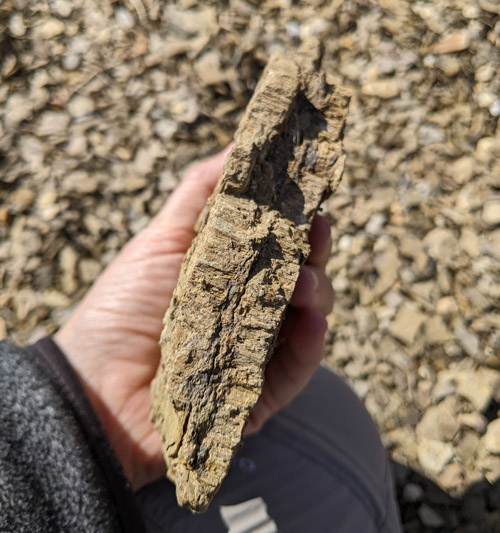
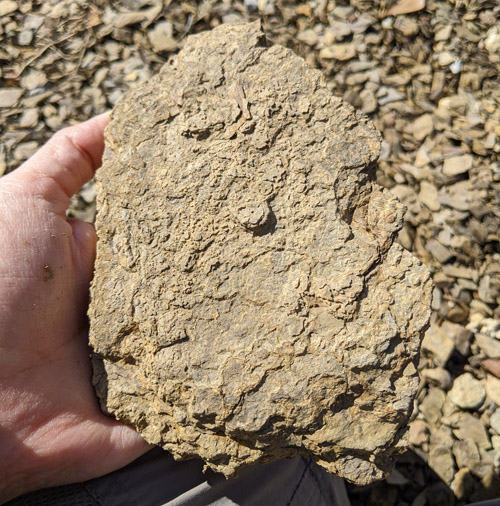
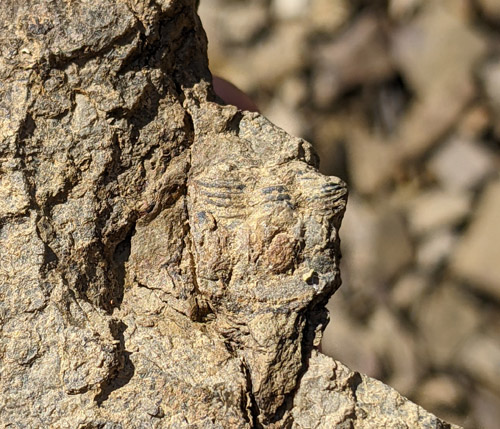
Stylolite with a trilobite!
Photos by Cam Muskelly
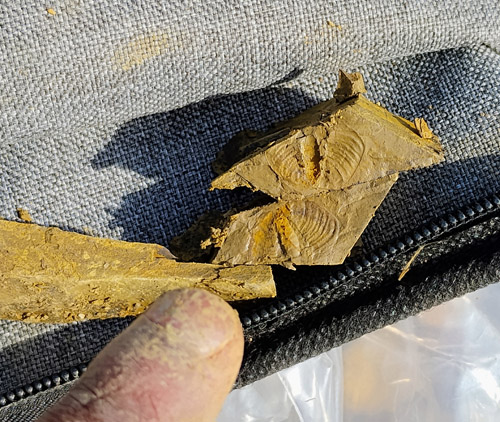
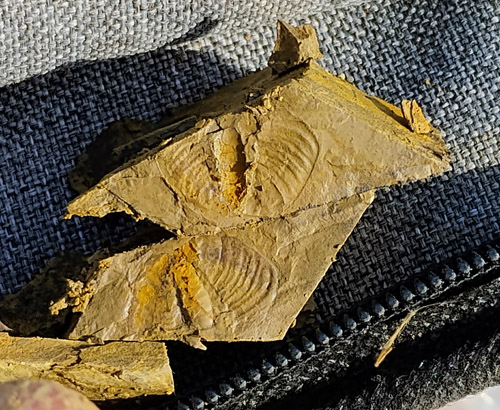
Cam identified this positive and negative as a tail section of a Coosia superba trilobite
Photos by Cam Muskelly
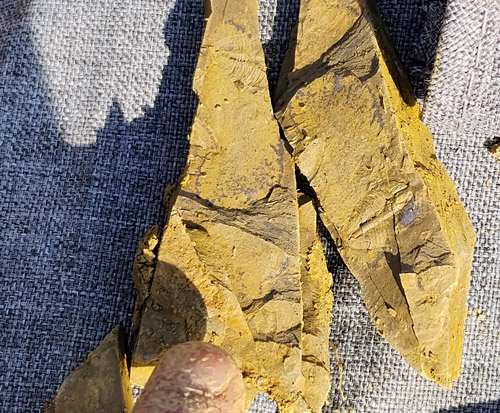
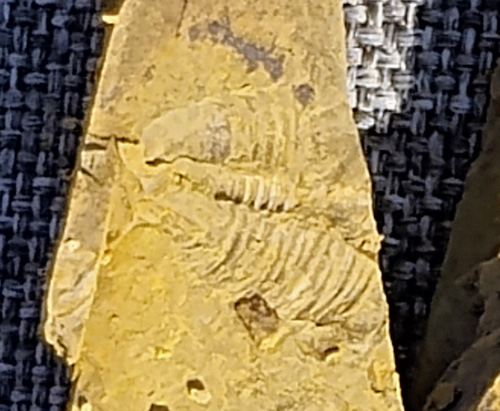
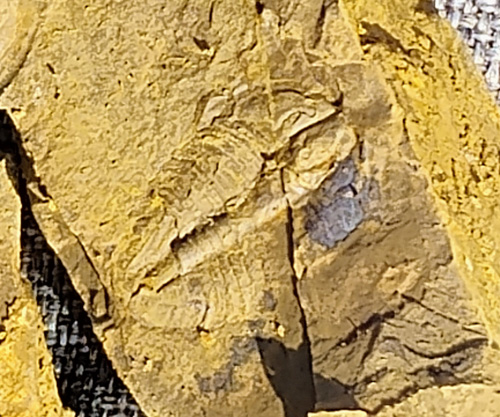
Another positive and negative that Cam identified as a complete Elrathia antiquata trilobite
(Close-ups are from the top of the left piece and lower middle of the right piece)
Photos by Tony Pack
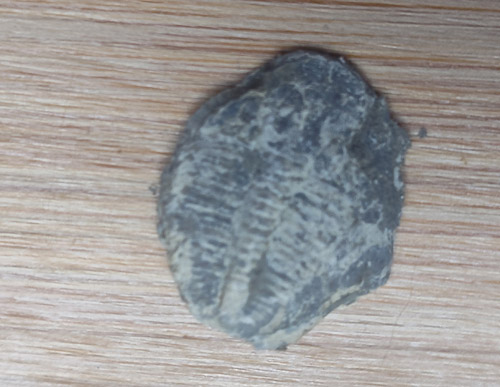
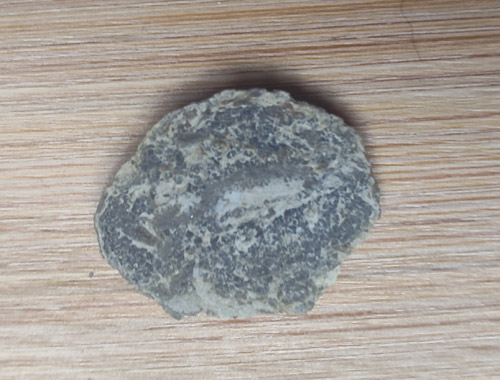
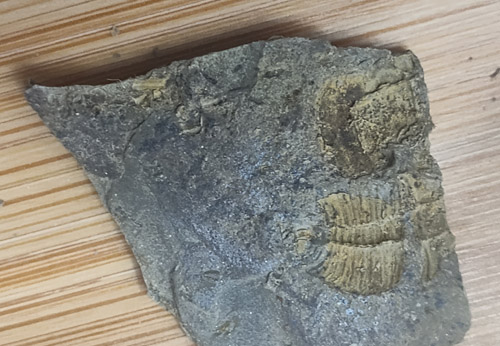
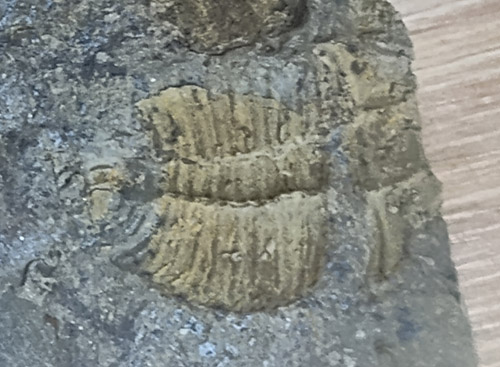
Some of Tony's favorite trilobites
Photos by Eric Dennin
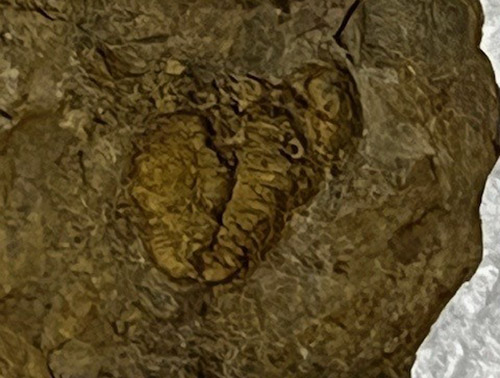
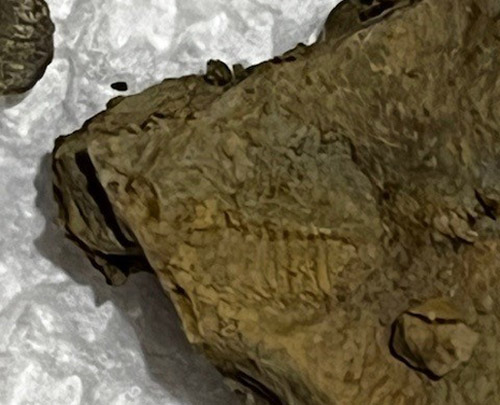
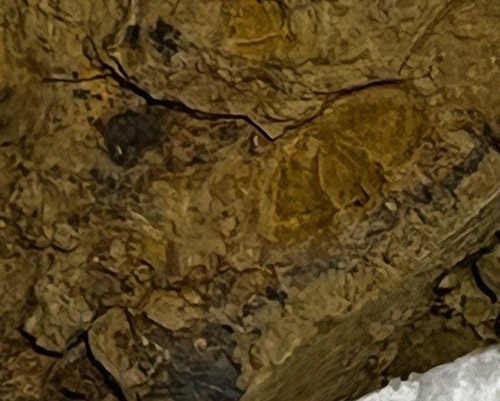
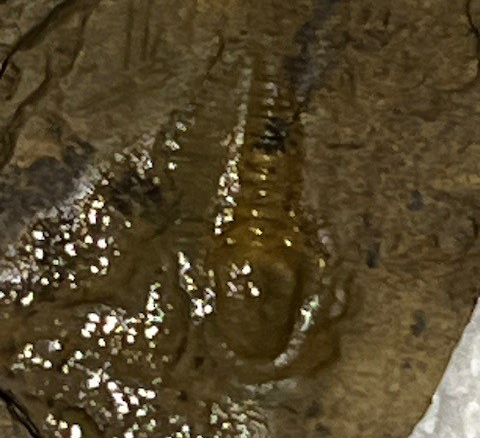
Eric had some favorites too
Photos by Lori Carter
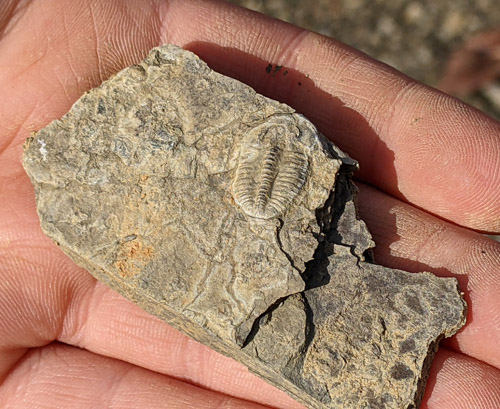
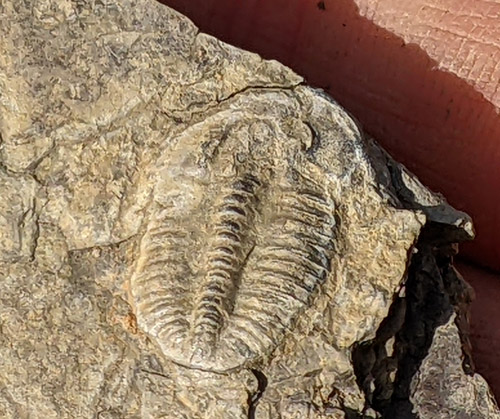
A junior found this superb trilobite!
Photos by Lori Carter
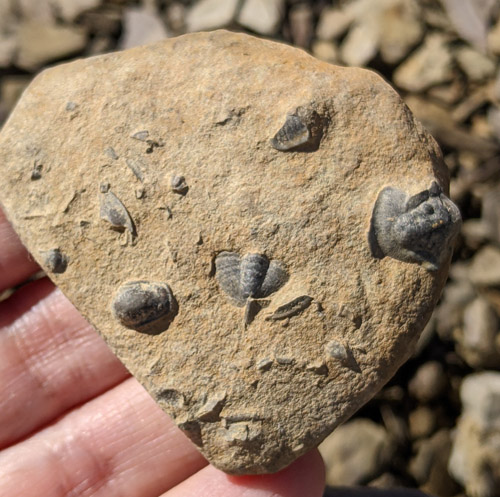
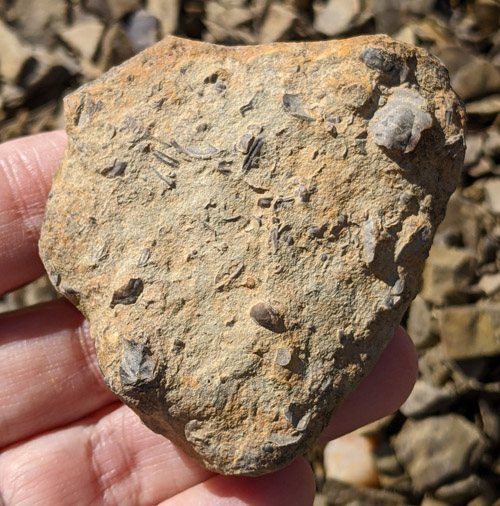
Another junior found this concretion with many little bits of trilobites - we call them trilo-bits for fun :o)
Photo by Lori Carter
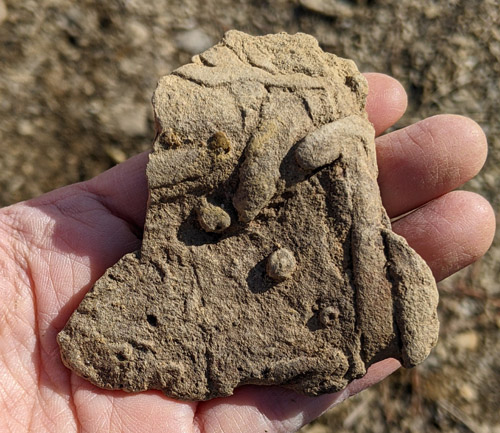
Cruziana, i.e., trilobite burrow traces, the first we've seen here
Photos by Amy Judd
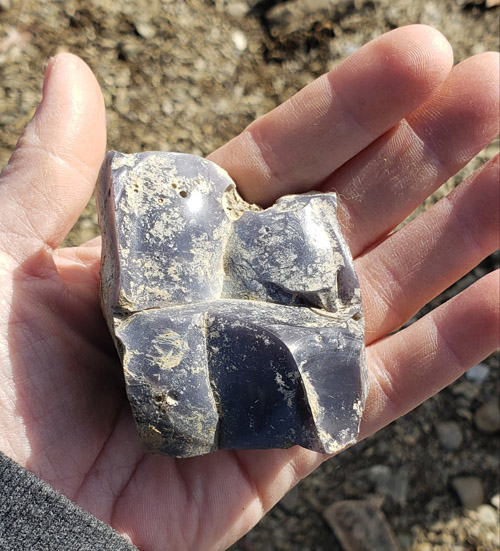
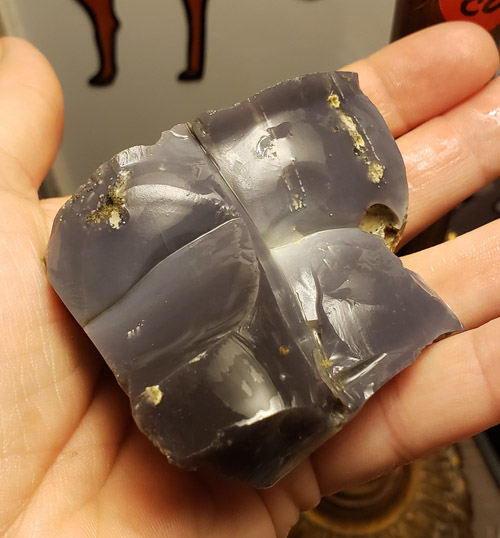
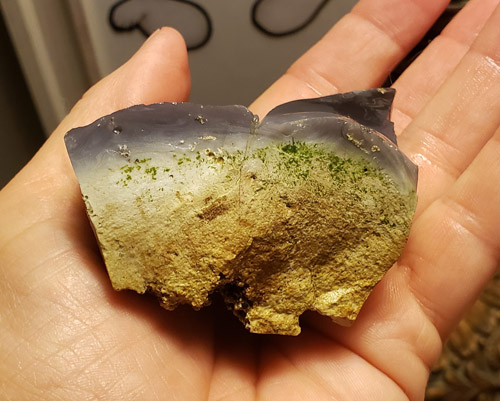
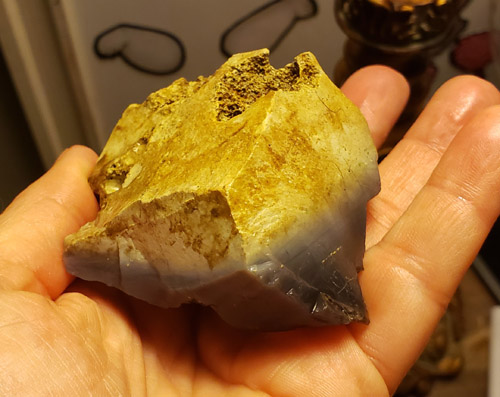
Amy found this slag from iron ore processing that may be Civil War age
Photos by Lori Carter
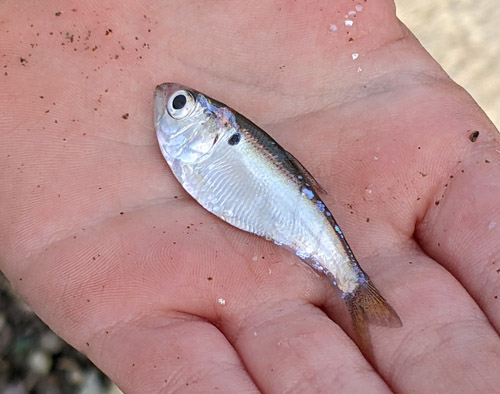
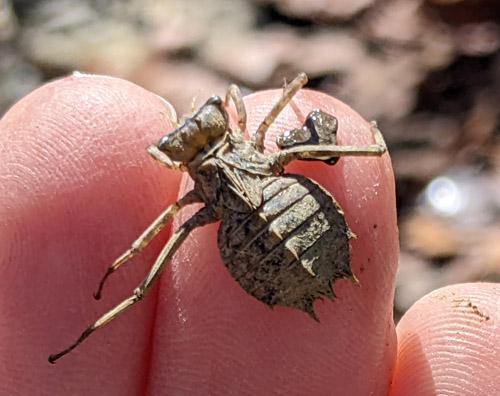
A few critters joined us including a deceased fish and a shadowdragon dragonfly (nymph/larva)
Brooksellas!
Photo by Lori Carter
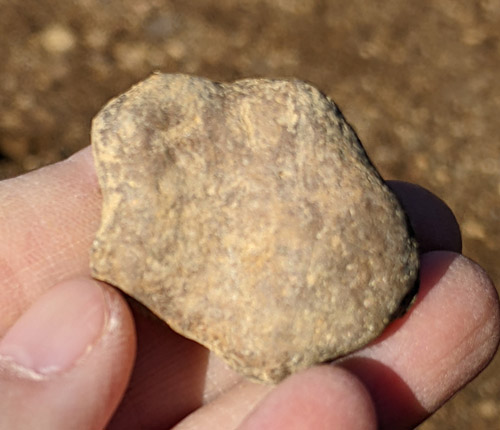
Photo by Amy Judd
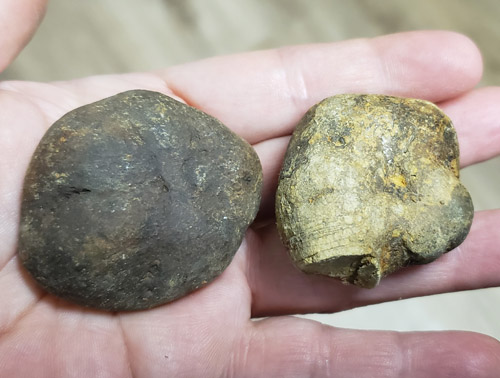
First, the slightly iffy brooksellas
Photos by Lori Carter
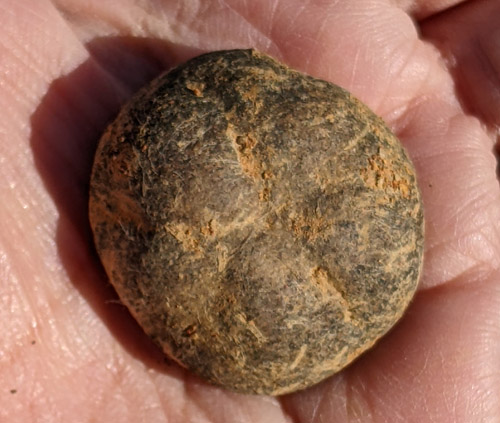
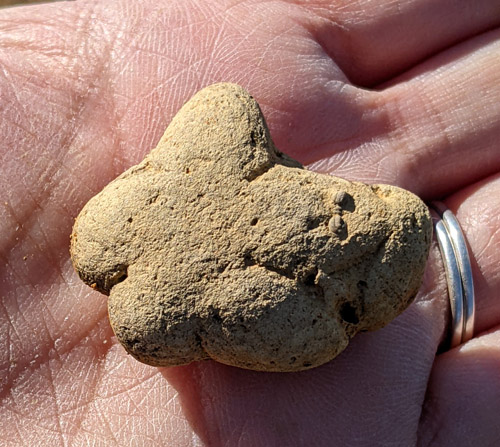
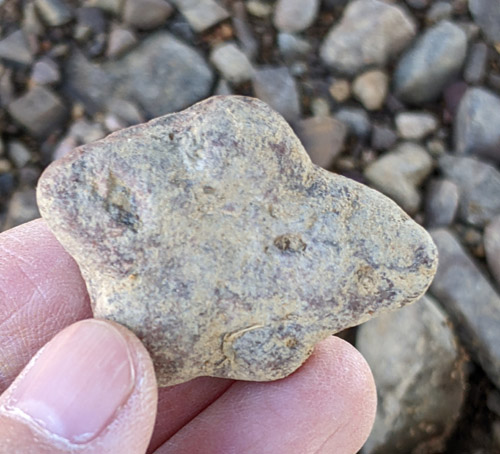
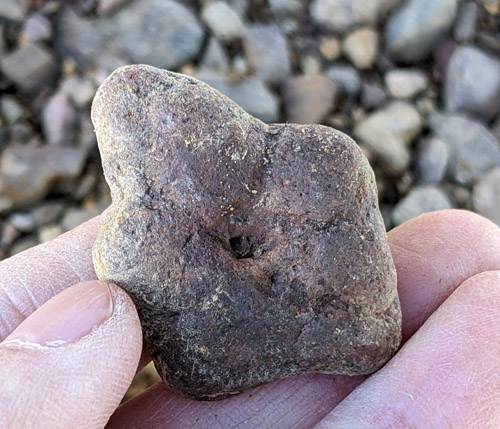
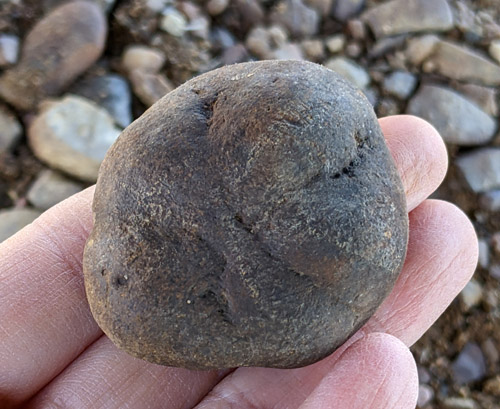
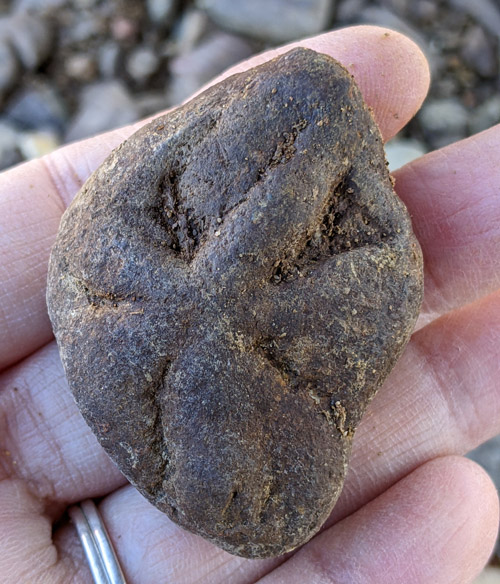
These are closer to classic brooksellas
Photos by Lori Carter
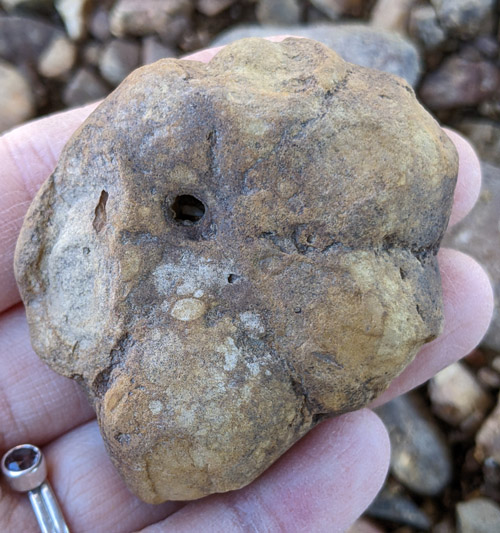
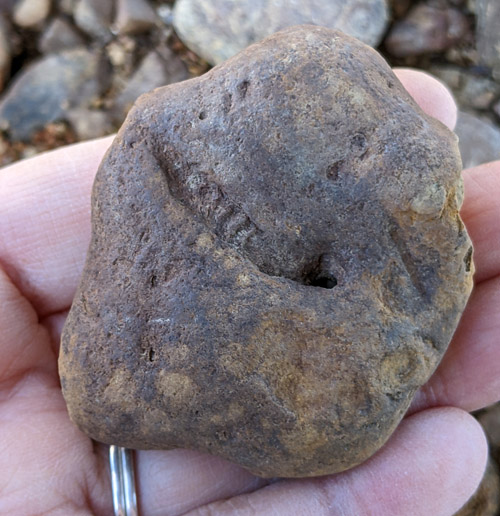
This brooksella has an interesting impression on one side
Photos by Lori Carter
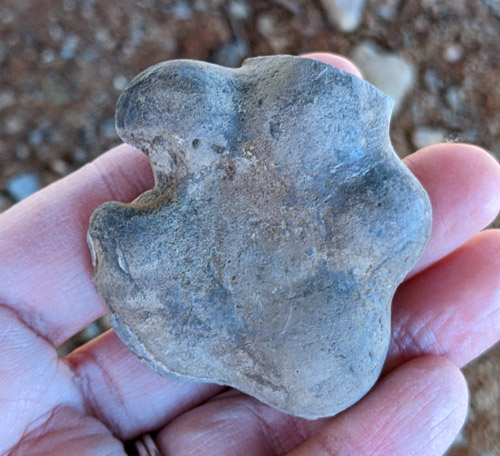
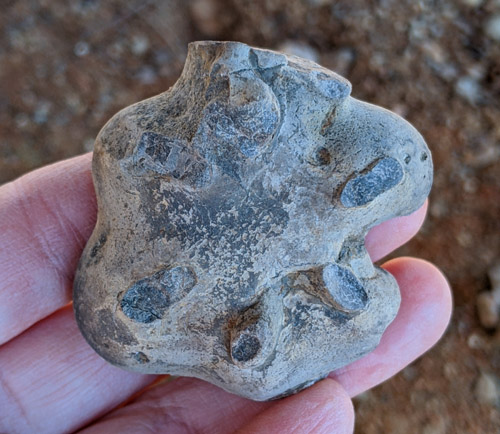
Though the lobes on this one are a bit odd, it is the unusual features on the lobes that need to be studied
Photos by Lori Carter
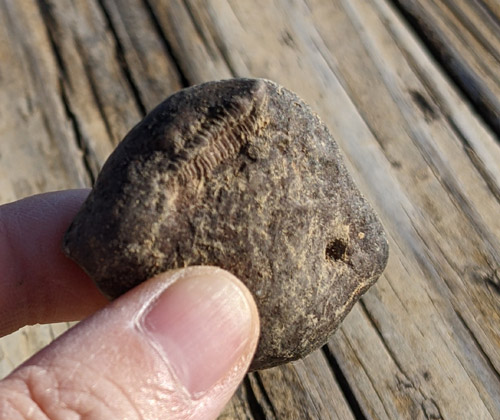
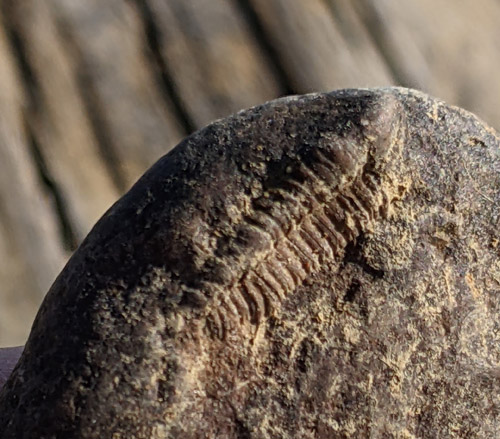
Beautiful trilobite in a concretion!
Photos by Lori Carter
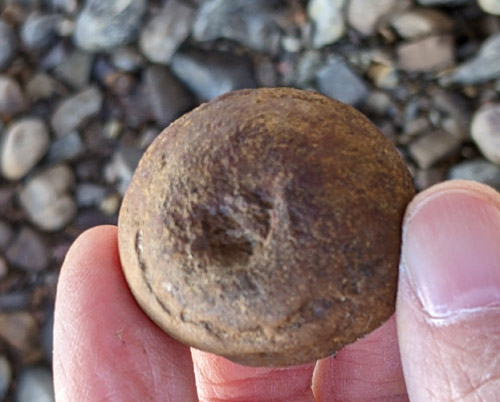
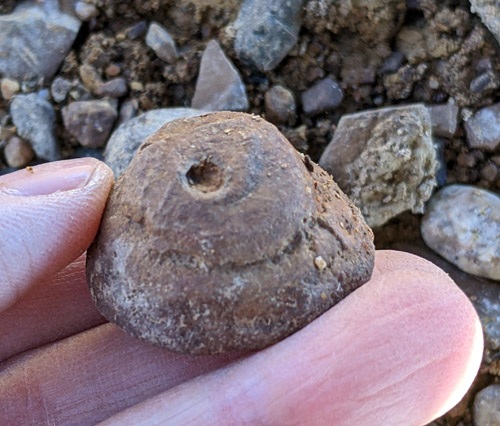
Maybe sponges, maybe not...
Photo by Lori Carter
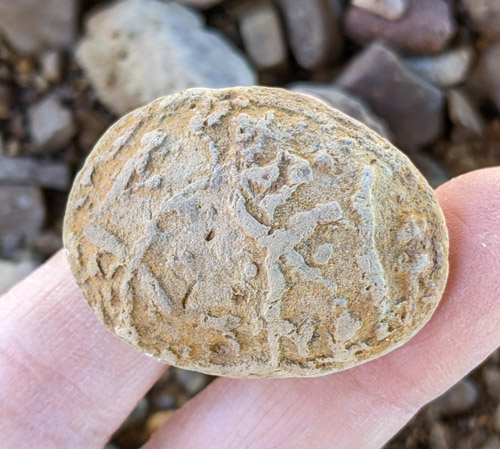
We see these a lot -- not sure what they are
Photo by Lori Carter
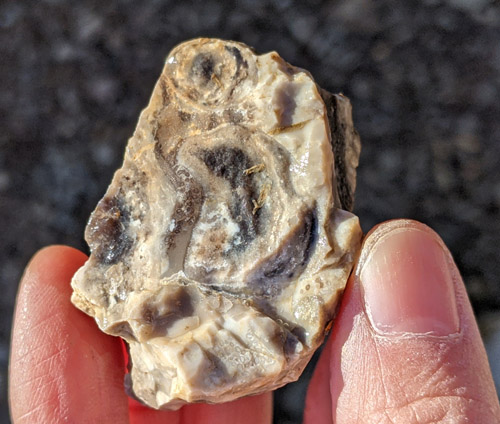
Might be a bit of stromatolite, might not...
Photo by Lori Carter
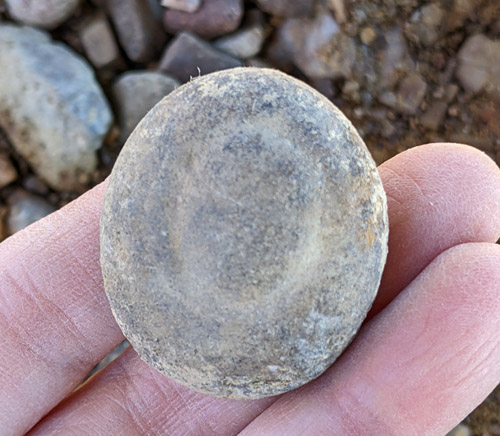
Junior got a nice pocket rock!
Photo by Lori Carter
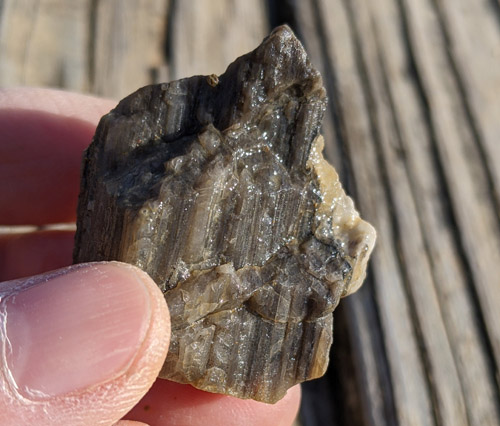
Looks like stylolite -- highly silicified!
Photo by Lori Carter
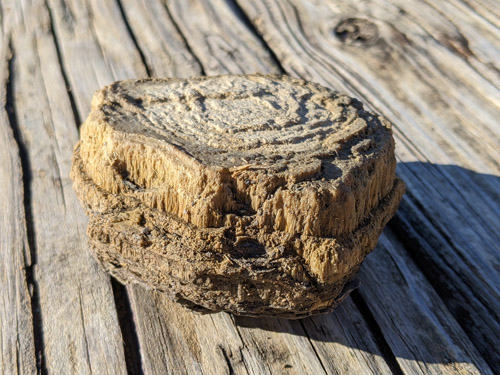
Definitely stylolite -- a really nice specimen!
Photos by Lori Carter
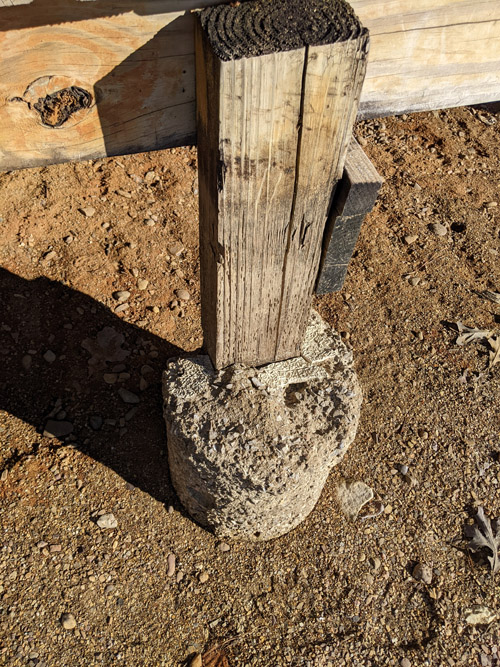
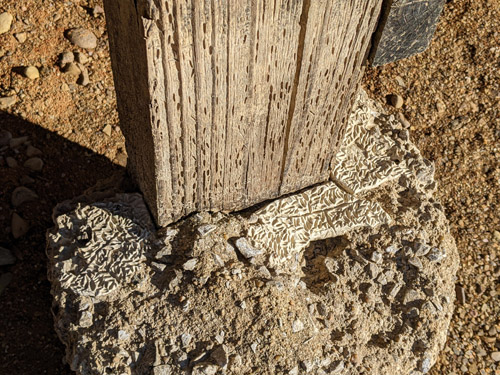
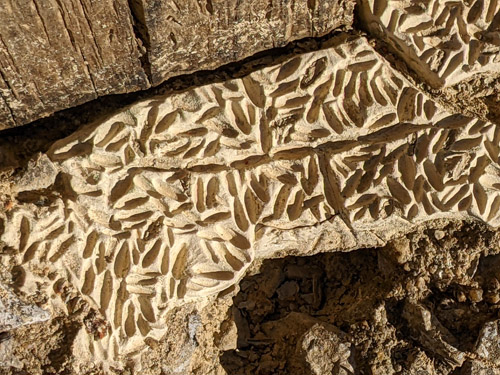
Some little critters are making these marks
Photos by Lori Carter
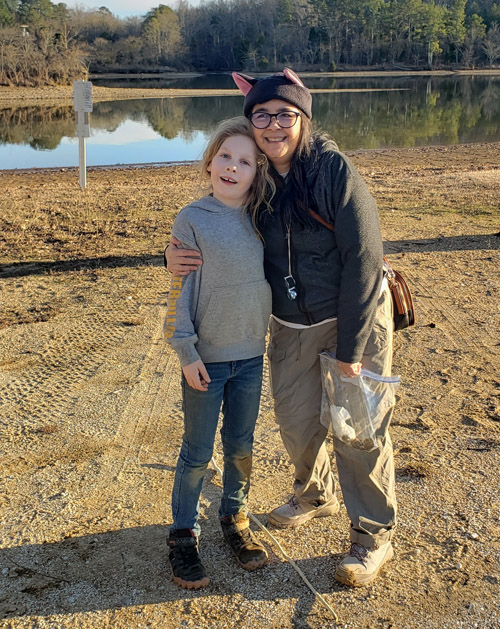
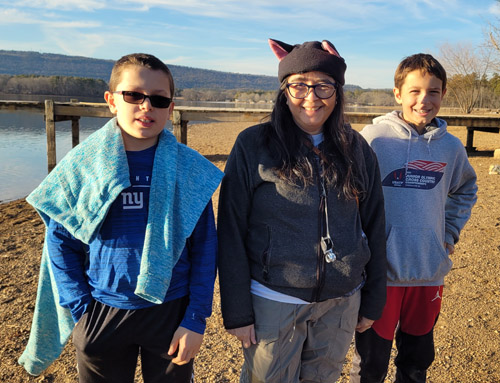
Speaking of little critters...
Click below for field trip policies

Copyright © Georgia Mineral Society, Inc.
